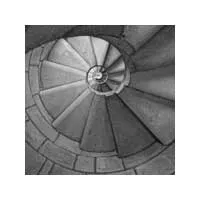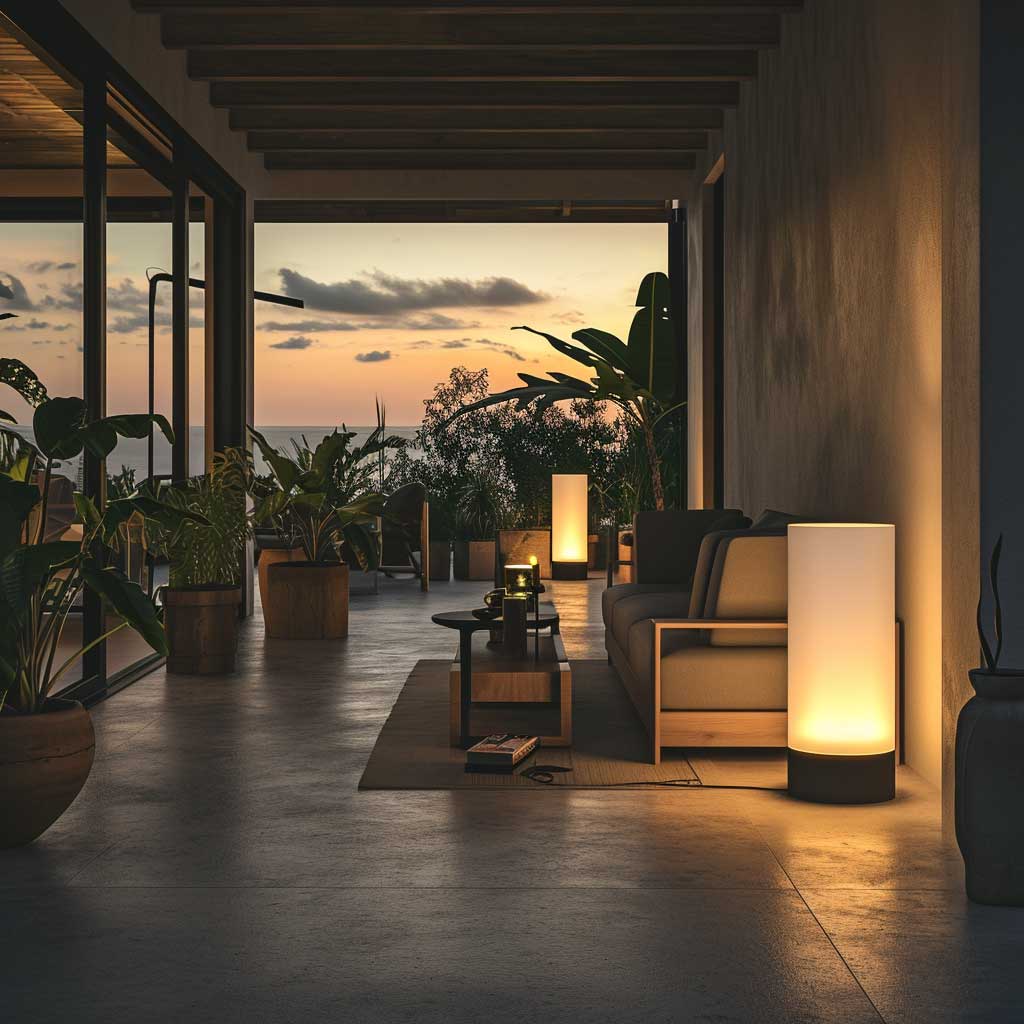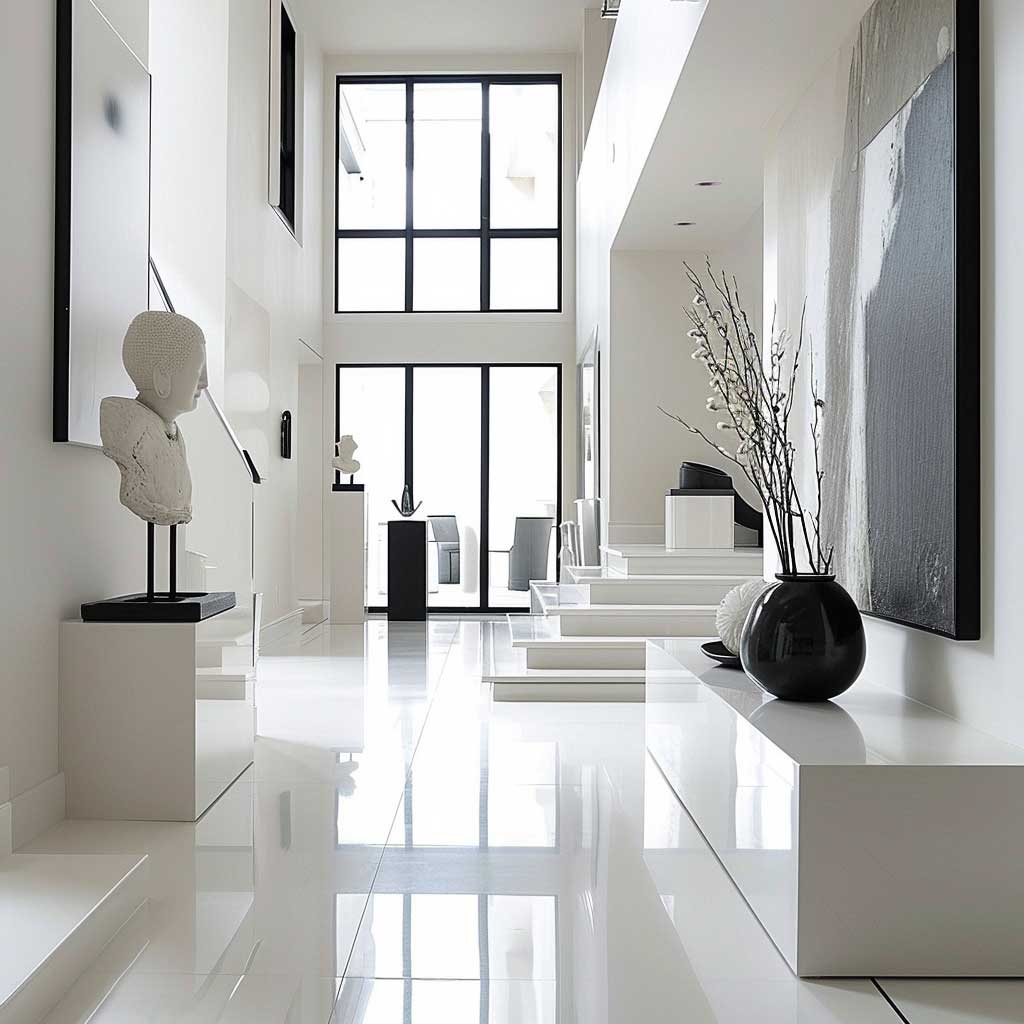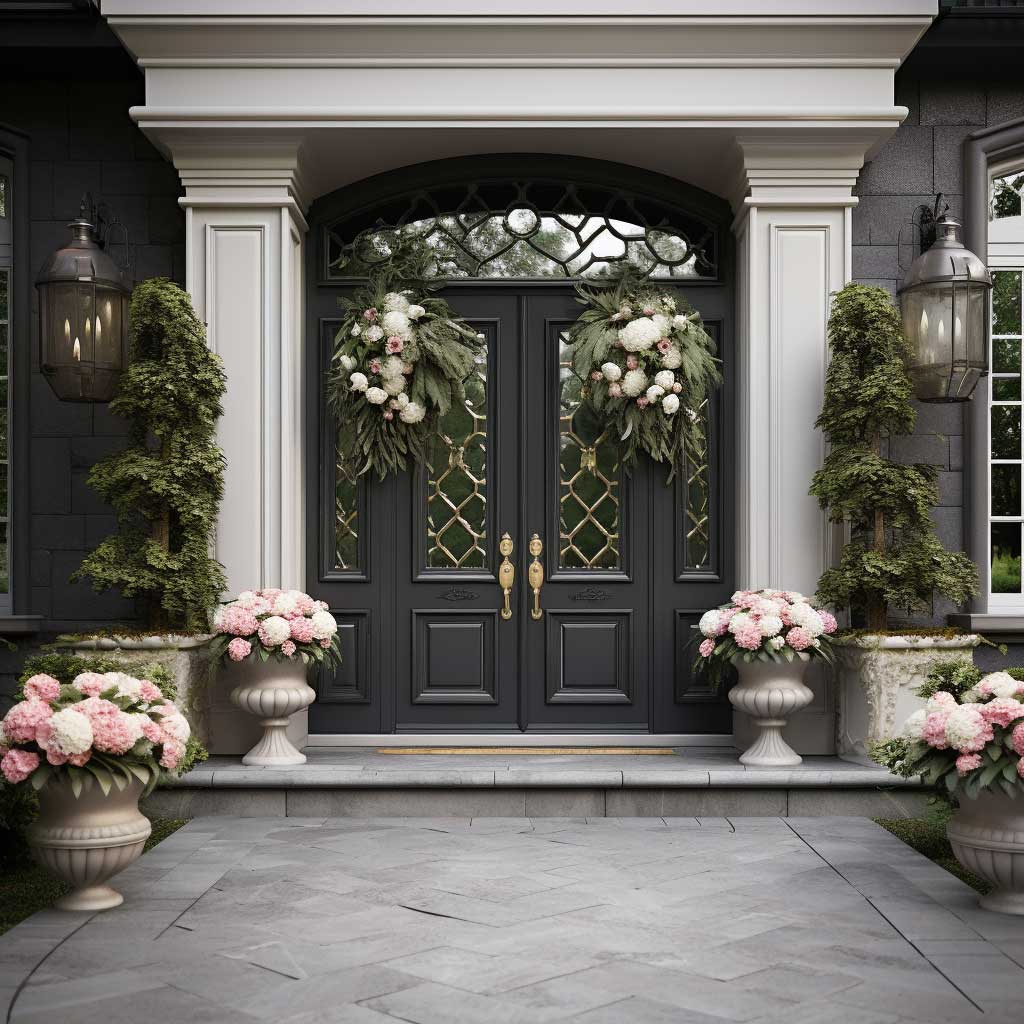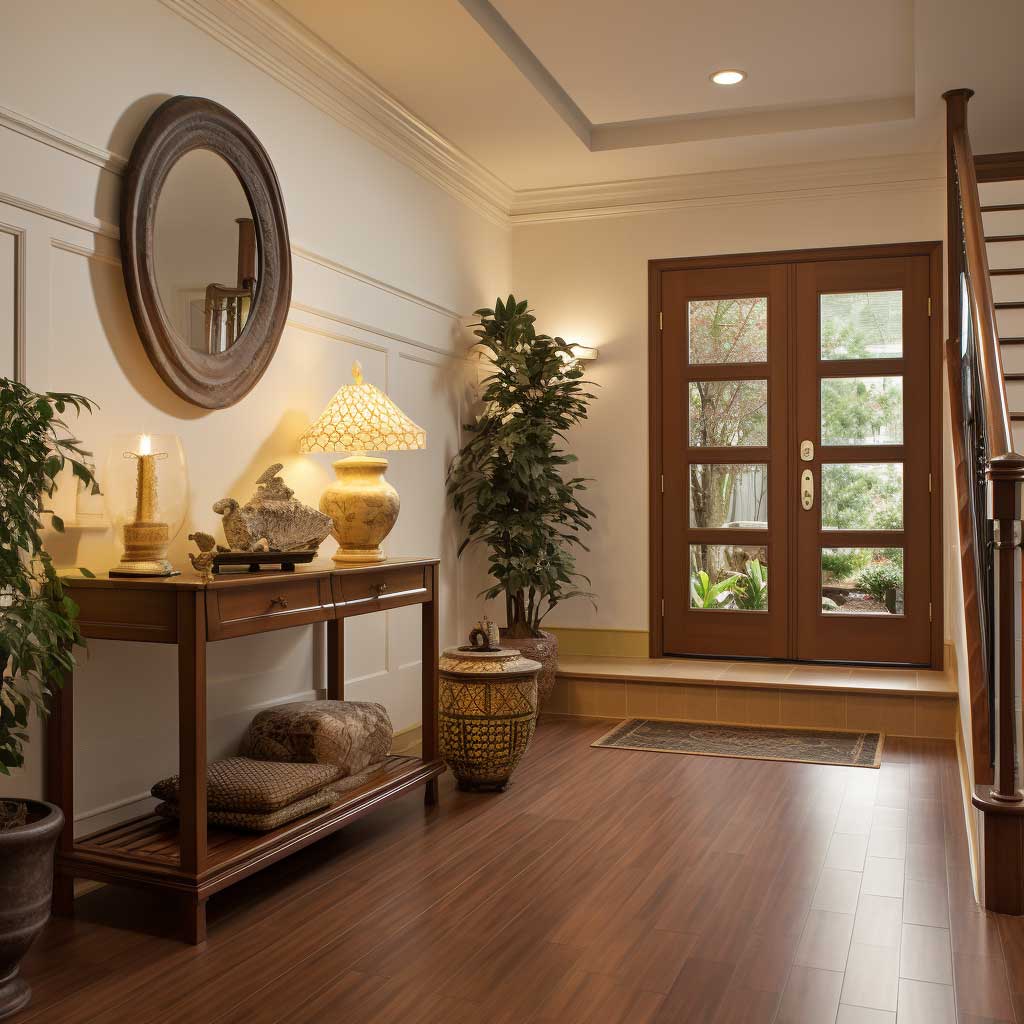Content
A home’s entrance is the first impression it imparts, and incorporating a chic entrance canopy can significantly elevate this experience. This article explores various entrance canopy designs, each uniquely tailored to enhance the facade of a home. From sleek modern lines to classic elegance, these canopy designs not only provide functional benefits like protection from the elements but also add a distinct aesthetic charm to your home’s exterior.
Modern Minimalist Entrance Canopy Design for Urban Homes
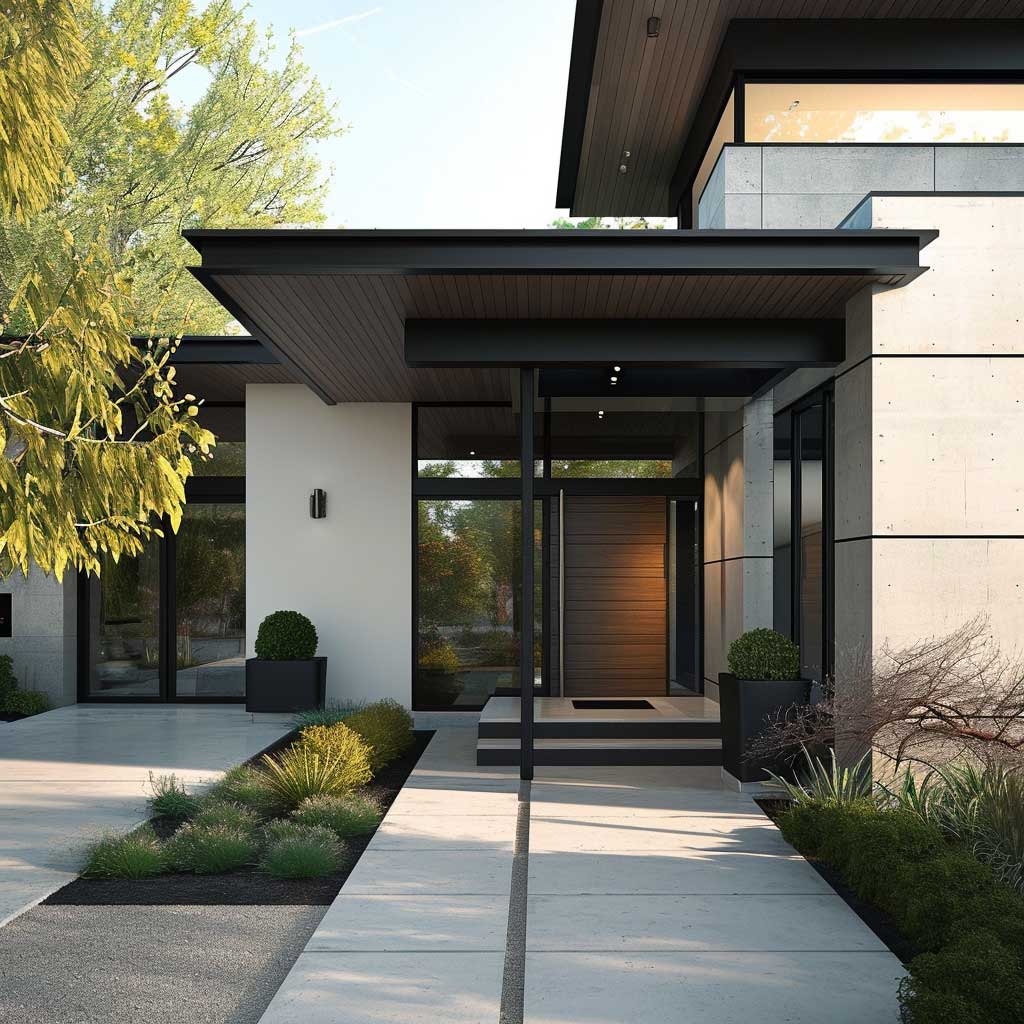
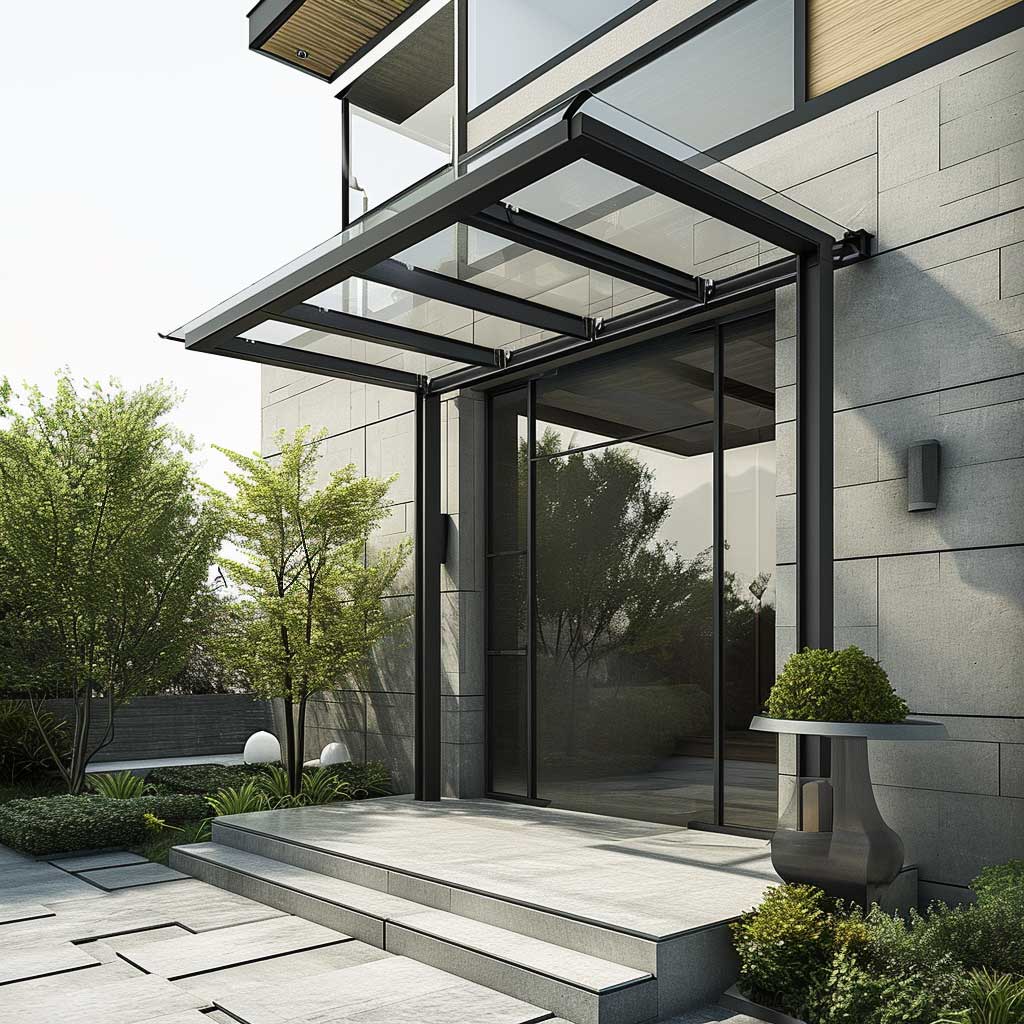

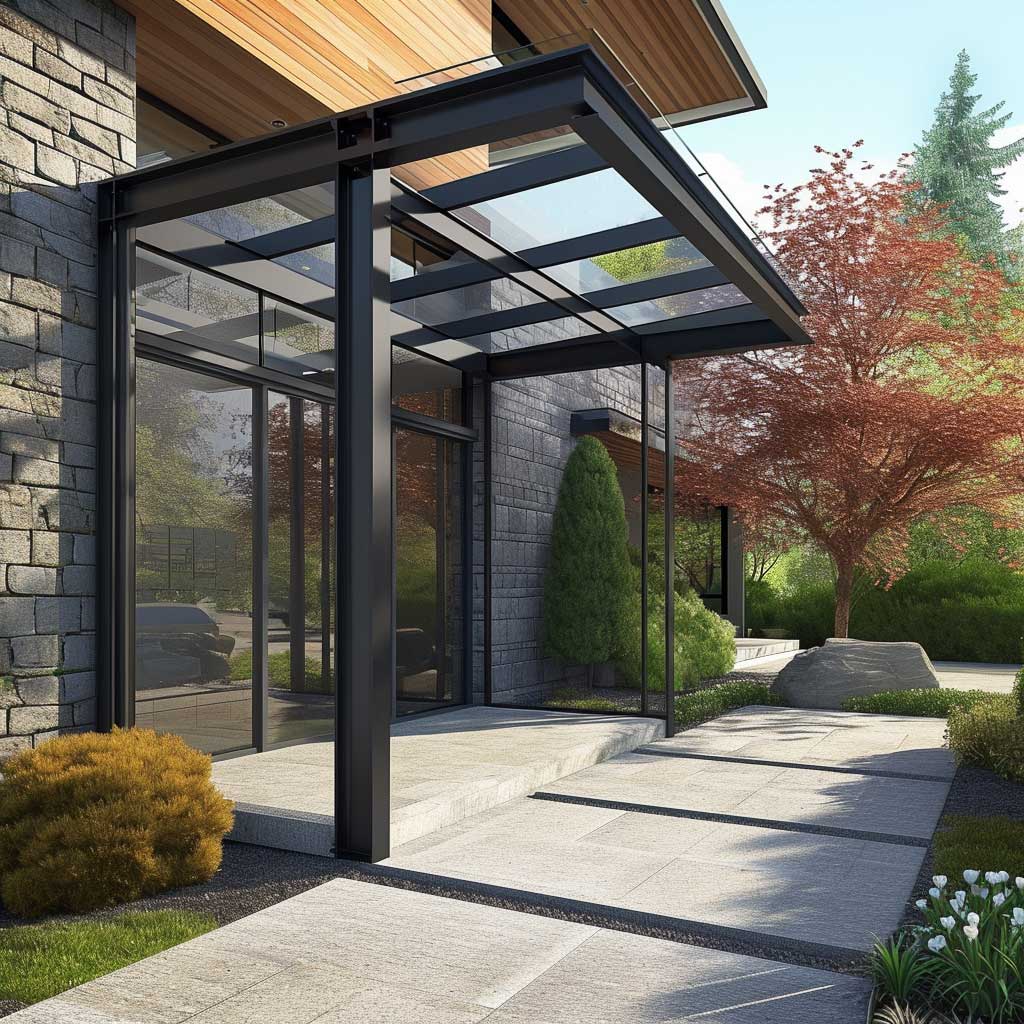
In the realm of architectural design, the entrance of a home sets the tone for the entire structure. The incorporation of a modern minimalist entrance canopy design in urban homes is a testament to the fusion of functionality and aesthetic simplicity. This design approach emphasizes clean lines, uncluttered spaces, and the use of contemporary materials, transforming the entrance into a statement of modern elegance.
The minimalist ethos in entrance canopy design is rooted in the ‘less is more’ philosophy. This is visible in the choice of materials and the overall design language. Common materials used in modern minimalist canopies include metal, glass, and concrete, known for their sleek look and durability. These materials are often used in their most natural, unadorned state, allowing their inherent beauty to stand out.
A key characteristic of these canopies is their clean and geometric lines. Free from ornate details, the design focuses on straight, angular forms that complement the urban landscape. The structure of the canopy, whether it extends from the building in a flat, angled, or curved form, is designed to create a visual impact through its simplicity.
Color plays a subtle yet significant role in minimalist canopy design. Typically, the palette is kept neutral – blacks, whites, and grays are common. These colors not only accentuate the modern appeal but also ensure that the canopy integrates seamlessly with a variety of architectural styles. The emphasis is on creating a harmonious balance with the building’s facade, rather than overpowering it.
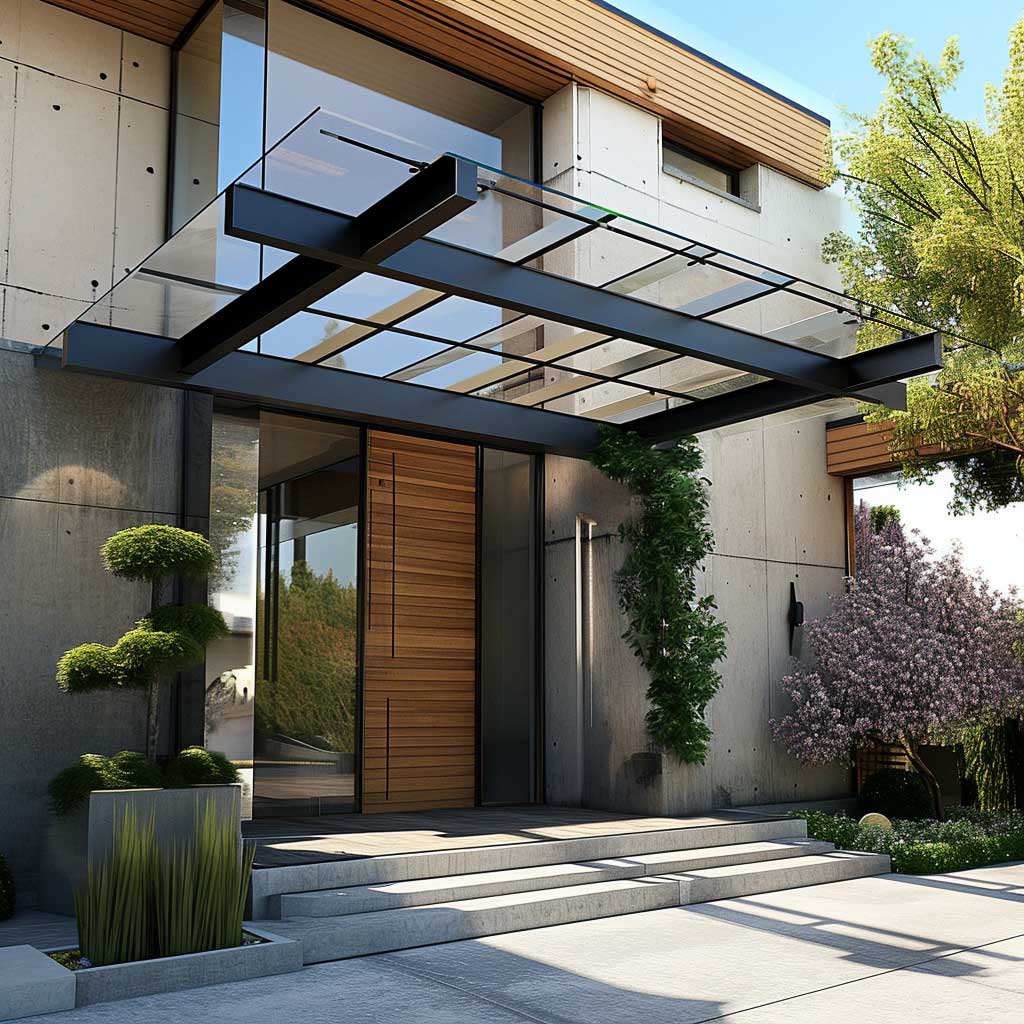
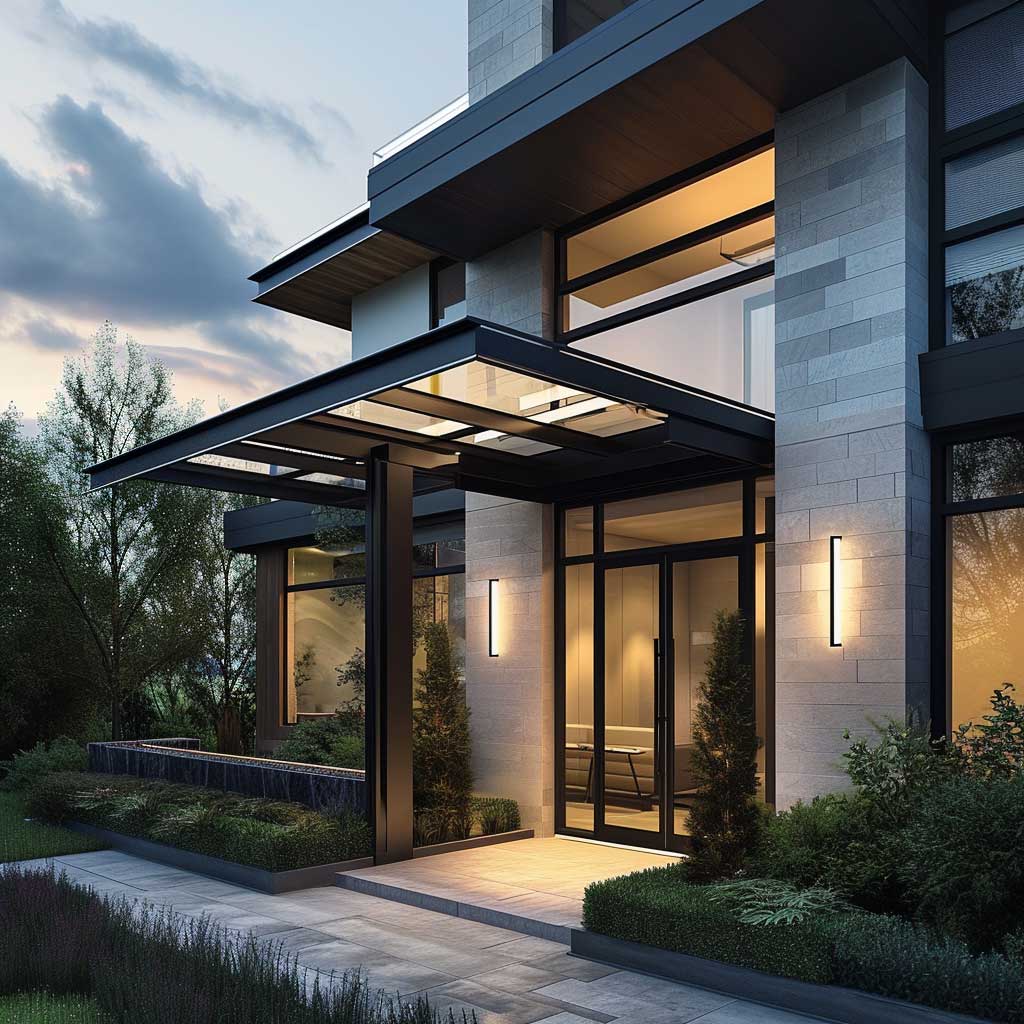

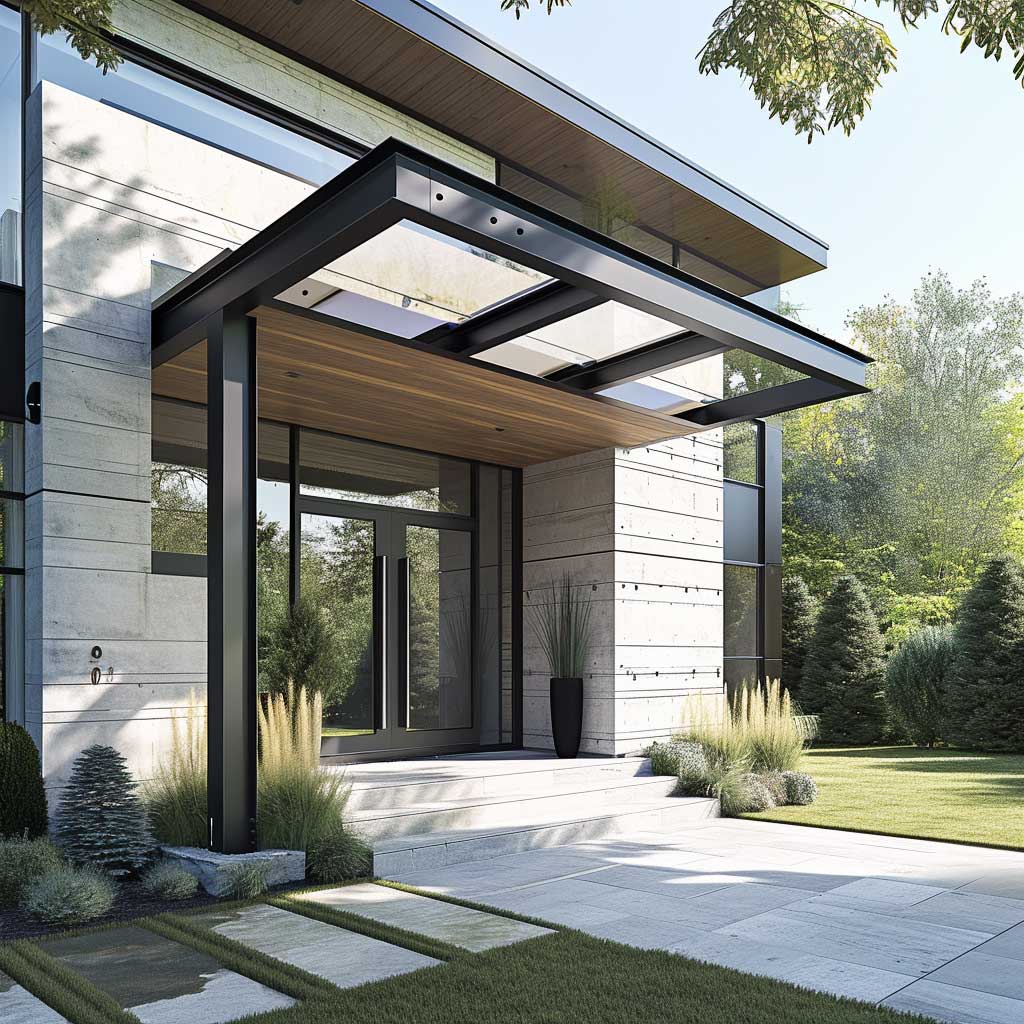
Functionality is another cornerstone of the minimalist approach. The canopy’s primary purpose is to provide shelter from weather elements like rain and sun. This functional aspect is elegantly woven into the design, ensuring that the canopy serves its purpose without compromising on style. Features like integrated drainage systems or sun-reflective coatings are often included, enhancing the usability of the space.
Lighting under the canopy is usually subtle and integrated. Recessed LED lights or simple strip lighting can be used to illuminate the entrance area in the evenings, creating a welcoming glow that enhances the canopy’s form and adds a layer of security.
The modern minimalist canopy also plays a role in the sustainability of the building. By providing shade, it can help in reducing heat gain, thereby lowering energy costs. The use of sustainable materials and energy-efficient lighting further contribute to the eco-friendly aspect of the design.
In essence, the modern minimalist entrance canopy design in urban homes is a reflection of contemporary living – efficient, elegant, and aesthetically pleasing. It is a design choice that speaks of sophistication and an appreciation for the beauty of simplicity.
Elegant Traditional Entrance Canopy Enhancing Curb Appeal


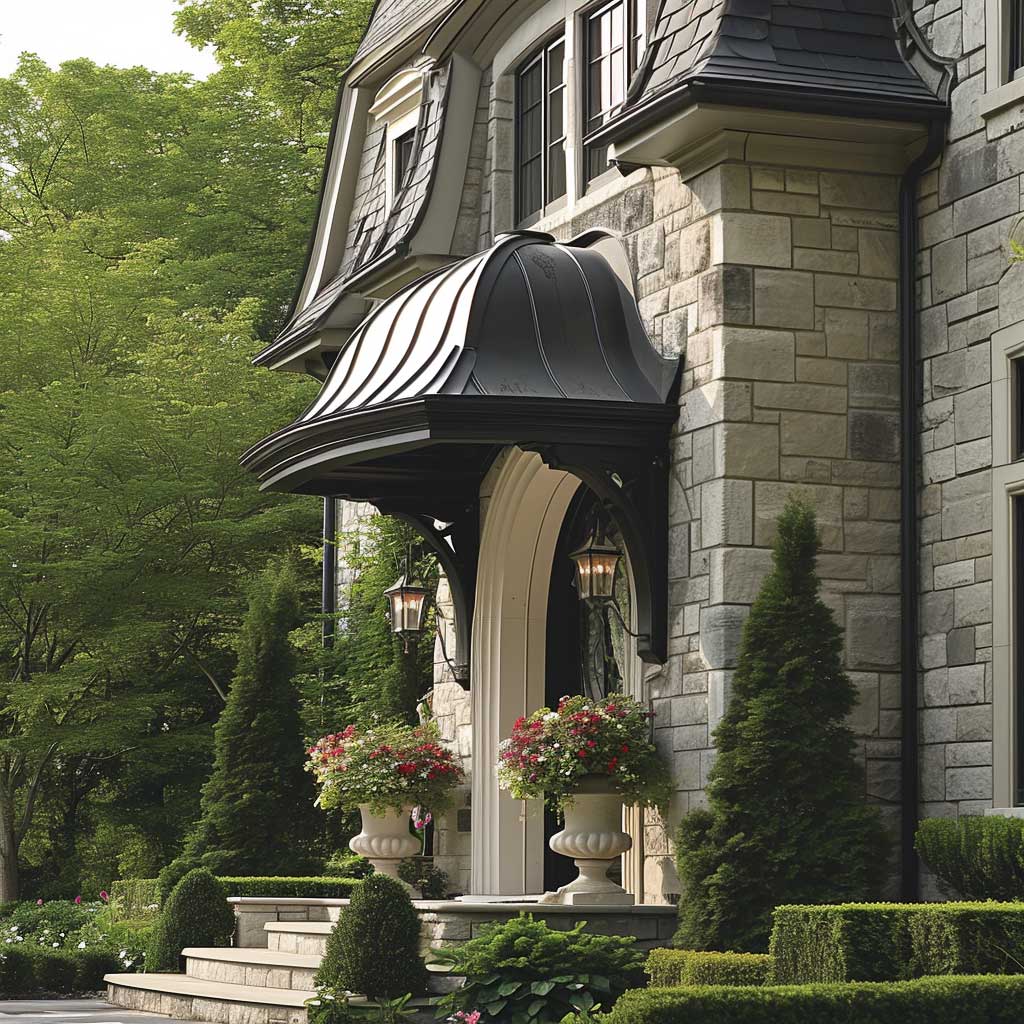
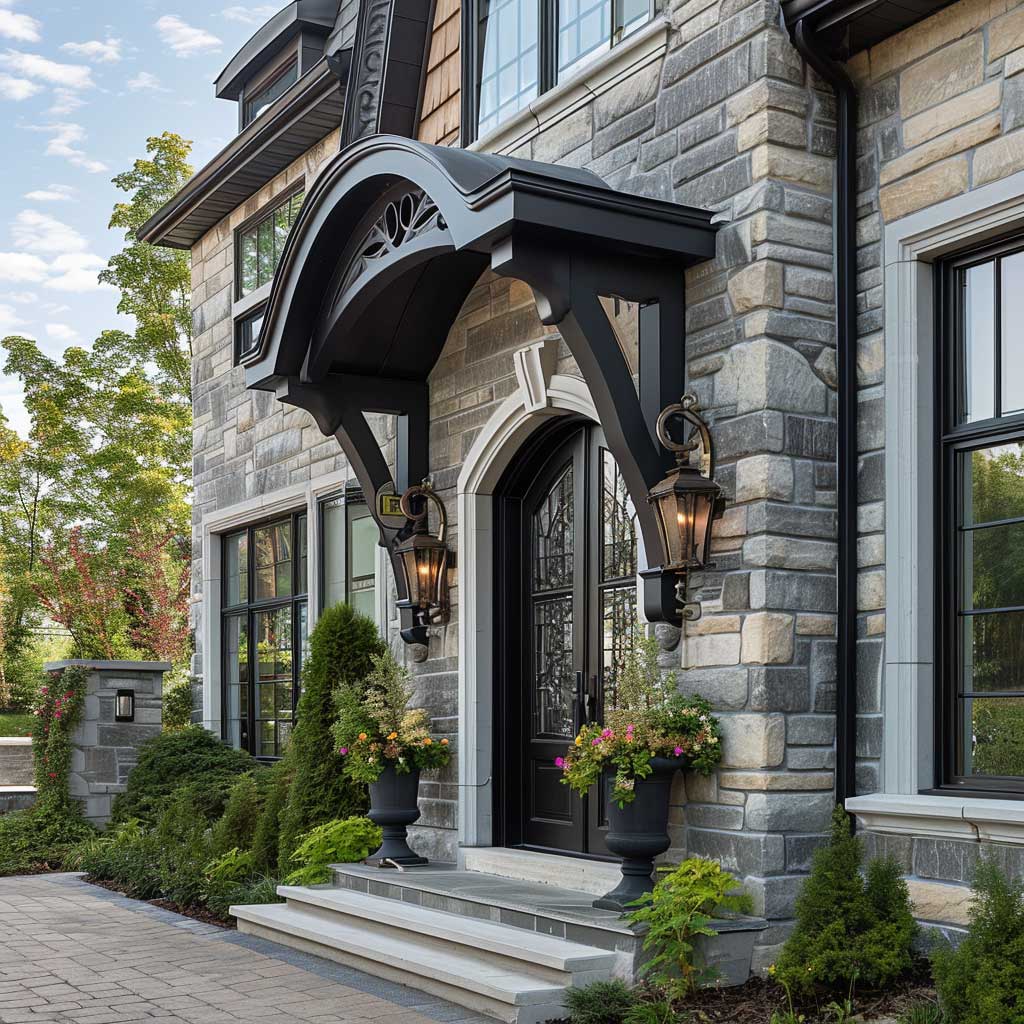
The entrance of a home is more than just a threshold; it’s an invitation, a preview of the style and elegance that lies within. Integrating a traditional entrance canopy design not only enhances the curb appeal of a home but also adds a touch of timeless elegance. Traditional canopy designs draw inspiration from classic architectural styles, embodying grace and sophistication that have stood the test of time.
Traditional entrance canopies are often characterized by their intricate designs and use of classic materials like wood, wrought iron, and sometimes glass. These materials are crafted into designs that reflect historical architectures, such as Victorian, Colonial, or Craftsman styles. The beauty of a traditional canopy lies in the details – ornamental brackets, carved woodwork, and decorative moldings all contribute to the overall aesthetic.
The design of a traditional canopy often includes curves and soft lines, contrasting the stark lines of modern minimalist styles. These curves, whether in the form of an arched top or scalloped edges, add a sense of warmth and charm to the home’s entrance. The canopy might also feature intricate patterns or motifs, a nod to the craftsmanship of bygone eras.
Color plays a significant role in traditional canopies. Unlike the neutral palette of modern designs, traditional canopies often feature richer, deeper hues. Classic colors like deep reds, forest greens, or navy blues are popular, as they complement the natural materials used in the canopy’s construction. These colors also contribute to the canopy’s visual impact, making the entrance more inviting and appealing.
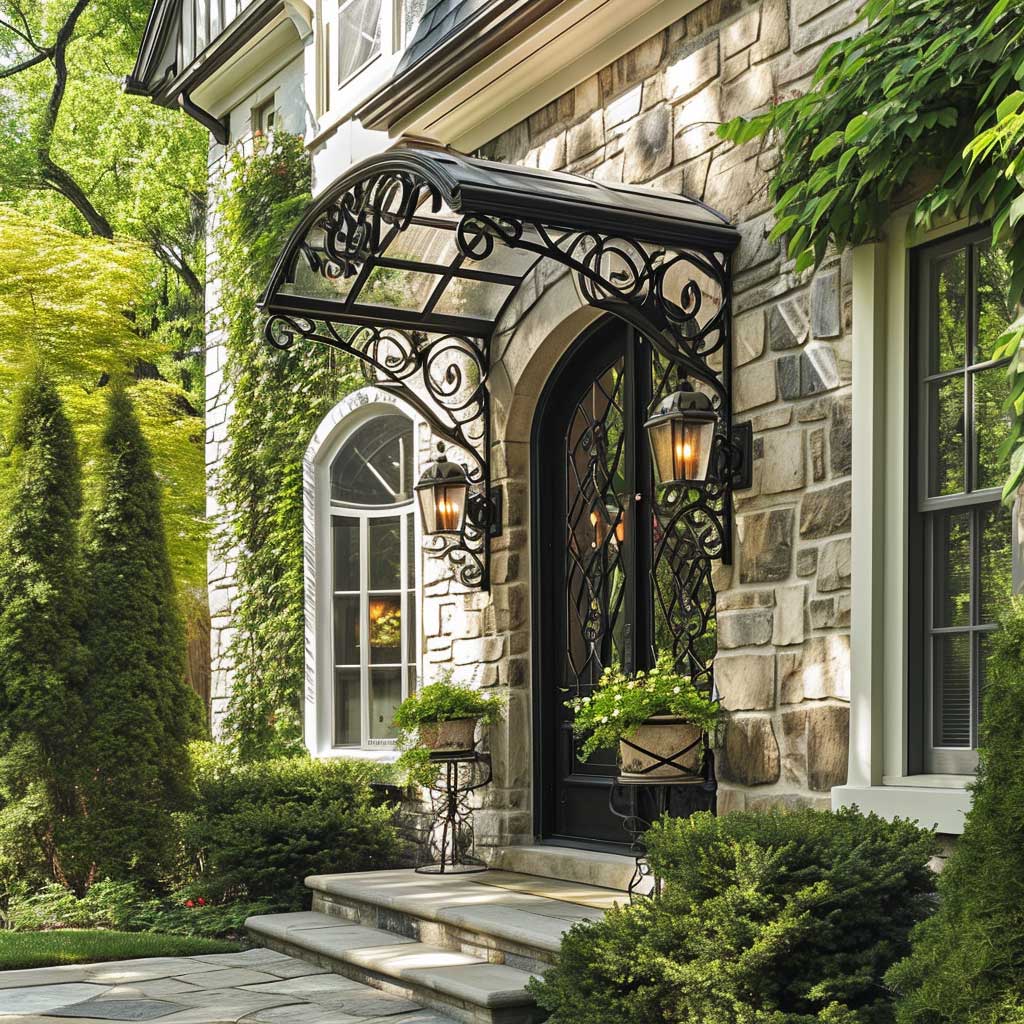

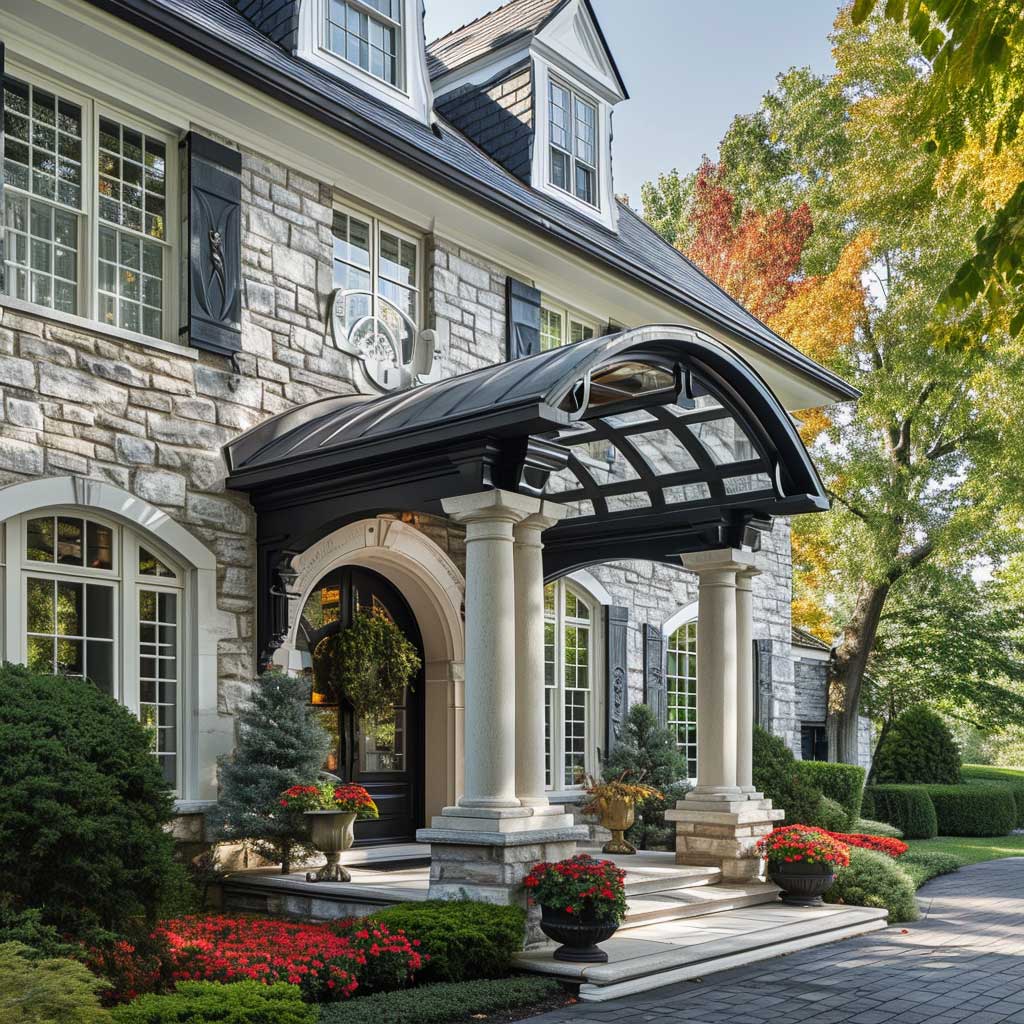

Incorporating a traditional canopy into a home’s entrance is also about creating harmony with the existing architectural elements. Attention is paid to ensuring that the canopy aligns with the style and period of the house, creating a cohesive look. This might involve matching the canopy’s design elements with those found elsewhere on the building’s facade, such as window frames or the front door.
The functional aspect of the traditional canopy is as important as its aesthetics. It serves as a shelter from the elements, protecting the entrance area from rain and sun. This practical feature makes the entrance more accessible and comfortable, enhancing the overall experience of entering the home.
Traditional entrance canopies also have the ability to increase a property’s curb appeal and value. They add an element of luxury and refinement that is often sought after in real estate. The canopy becomes a focal point, drawing the eye and adding to the home’s overall charm and character.
In conclusion, an elegant traditional entrance canopy design is a timeless addition to any home. It embodies the elegance of past architectural styles while providing practical benefits. Such a design not only enhances the curb appeal but also serves as a testament to the enduring allure of traditional aesthetics.
Innovative Glass Entrance Canopy for Stylish Exteriors

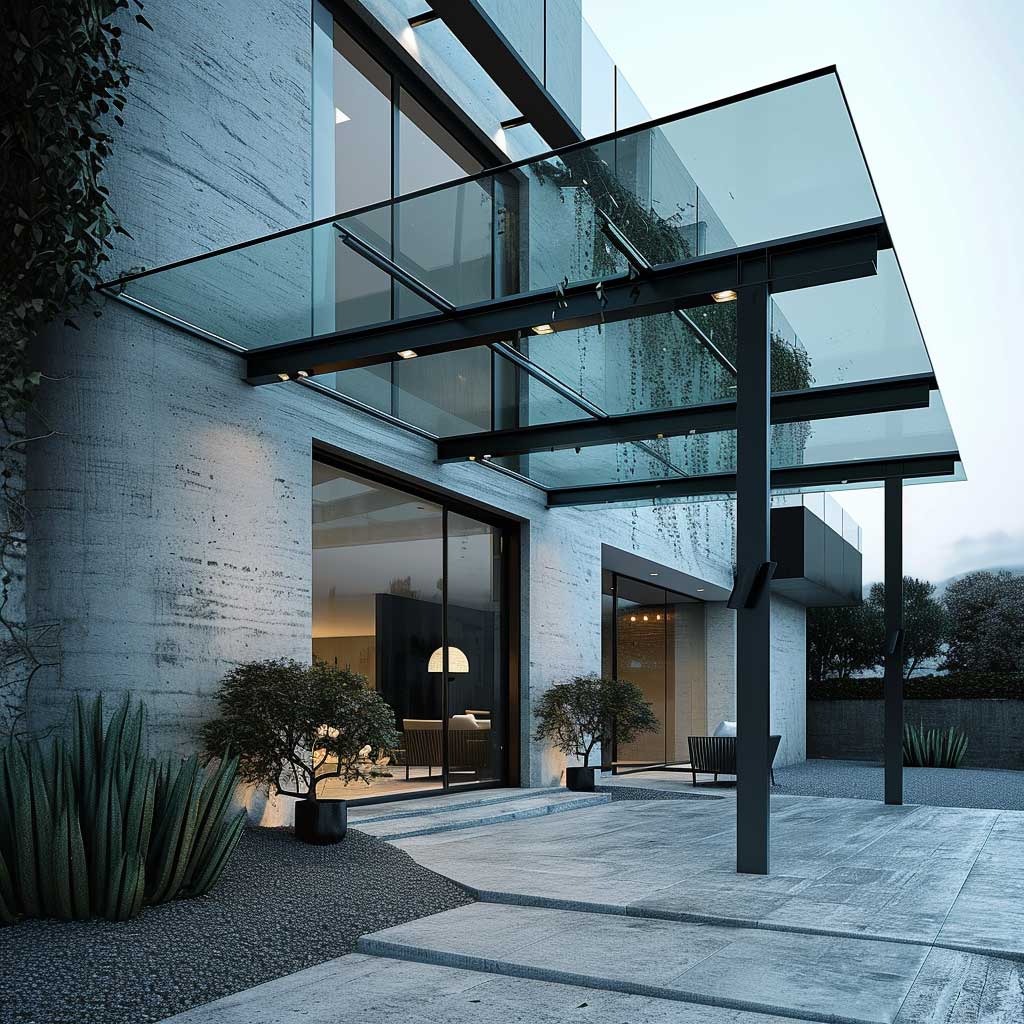
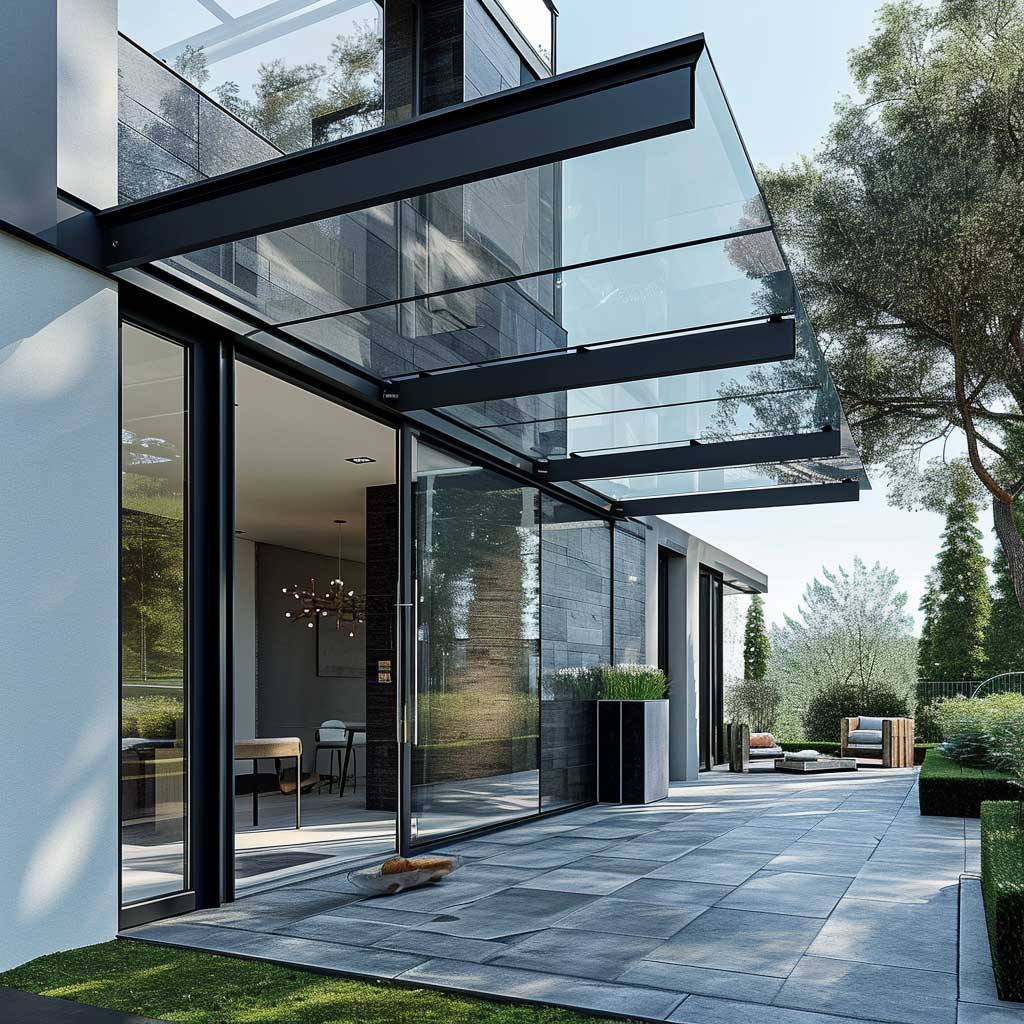

In the contemporary world of architectural design, the use of glass in entrance canopies has emerged as a symbol of modernity and sophistication. An innovative glass entrance canopy design is not just a functional addition to a home’s exterior; it is a statement piece that reflects a fusion of style, innovation, and openness. This design trend brings a sleek and airy feel to the entrance, enhancing the overall aesthetic appeal of the home.
The appeal of a glass canopy lies in its ability to blend functionality with contemporary elegance. The use of glass as a primary material in the canopy design offers a visually light yet striking feature. It creates an illusion of space, allowing natural light to filter through while providing shelter. This interplay of light and transparency makes the entrance area feel open and welcoming.
A key characteristic of glass canopy designs is their minimalist approach. They often feature clean lines and minimal structural elements to maintain a sense of openness and clarity. The support structures, typically made of steel or aluminum, are designed to be sleek and unobtrusive. These materials are not only chosen for their strength and durability but also for their ability to complement the modern aesthetic of the glass.
Color and texture play a subtle but important role in glass canopy designs. The transparency of the glass is its main feature, but it can be enhanced with tints or frosting to match the home’s color scheme. Textured glass options, such as fluted or patterned glass, can add an element of interest without compromising the canopy’s minimalist style.

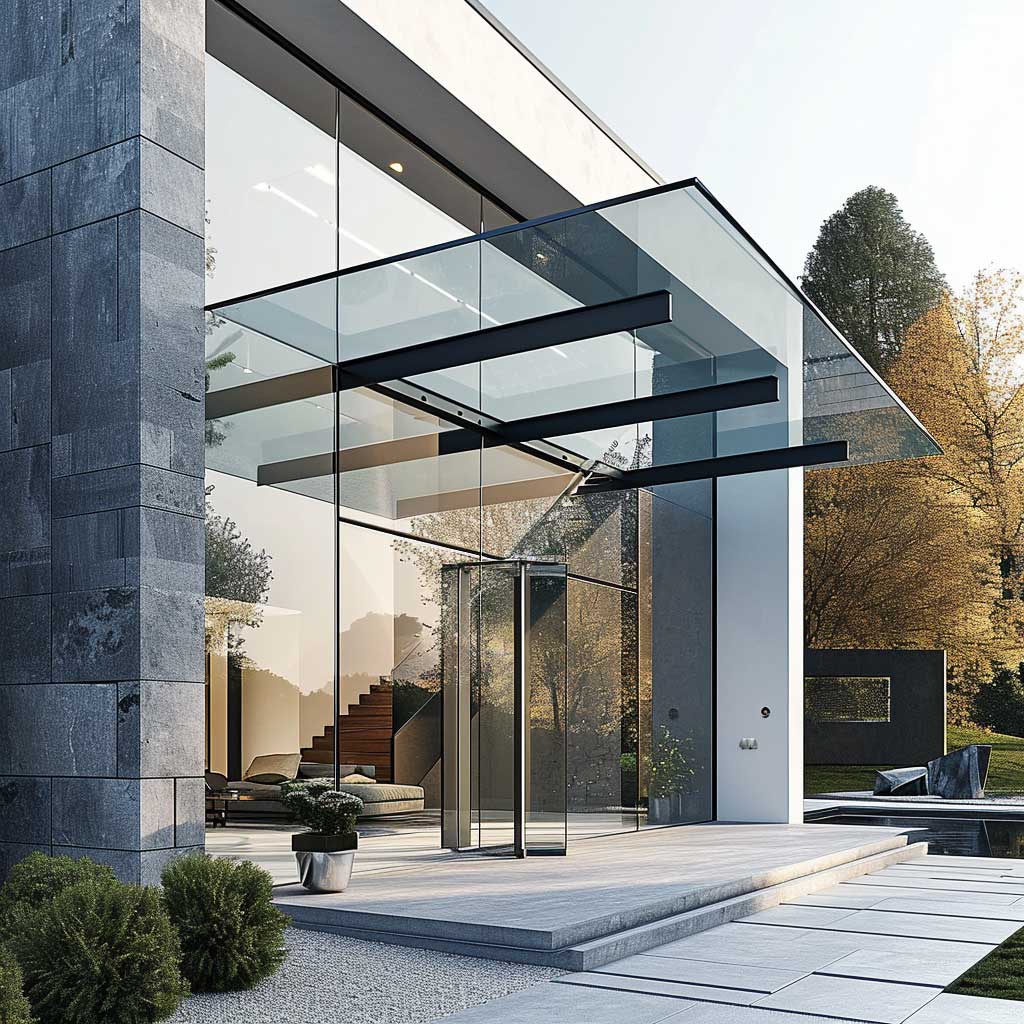
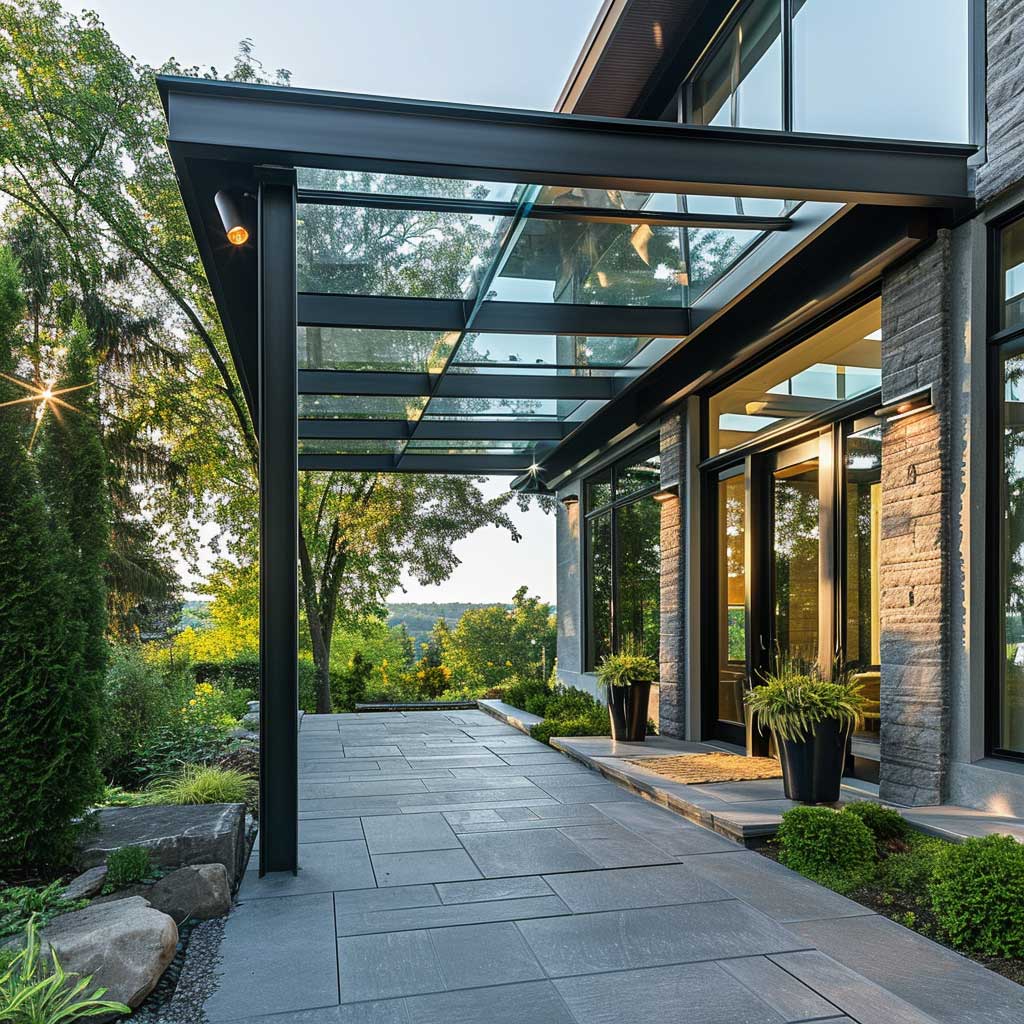

The innovation in glass canopy design extends beyond aesthetics into the realm of technology. Advances in glass manufacturing have led to the development of toughened and laminated glass that is both safe and durable, ideal for use in outdoor structures. Some glass canopies incorporate smart glass technology, which allows the glass to change its transparency depending on the weather, providing optimal comfort in various conditions.
A glass entrance canopy also has the advantage of versatility. It can be designed to complement a range of architectural styles, from ultra-modern homes to more traditional settings. The canopy can be custom-shaped to fit specific spaces, whether it’s a flat, angled, or curved design, making it a suitable option for various entrance layouts.
The environmental aspect of a glass canopy is also noteworthy. By allowing natural light to permeate the entrance area, it reduces the need for artificial lighting during the day, contributing to energy efficiency. This feature, coupled with the use of recyclable materials like glass and metal, underscores the eco-friendly potential of these canopies.
In summary, an innovative glass entrance canopy design offers a blend of style, functionality, and modern technology. It transforms the entrance of a home into a space that is not just sheltered but also aesthetically pleasing and welcoming. The use of glass in canopy design is a testament to the evolving trends in architecture, where materials are used not just for their practicality but also for their ability to elevate the design narrative of a space.
Entrance canopies are more than just architectural elements; they are style statements that reflect the personality of a home and its inhabitants. These designs, ranging from minimalist to traditional, offer both practicality and elegance, setting the tone for the rest of the house. The right entrance canopy design not only protects against weather elements but also serves as a welcoming gesture to guests, blending seamlessly with the home’s overall design theme and adding to its curb appeal.
